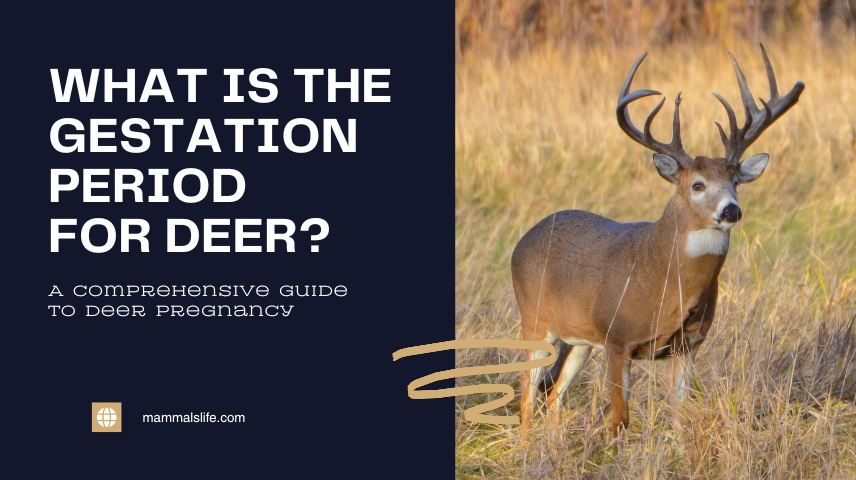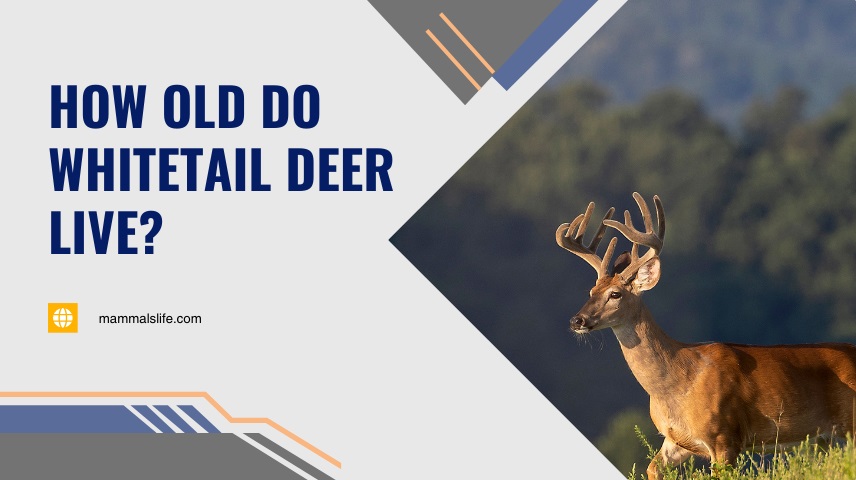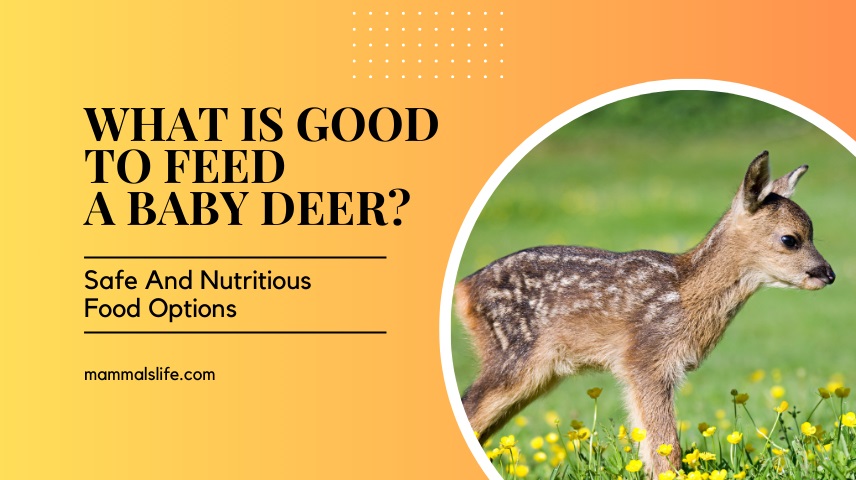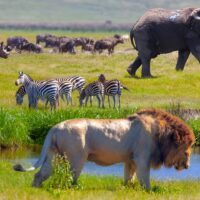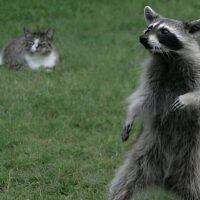Last Updated on February 22, 2025 by Mammals Life
The gestation period for deer typically ranges from 200 to 205 days. Deer pregnancy varies slightly between species.
Deer are fascinating creatures, and understanding their reproductive cycle is crucial for wildlife enthusiasts. The gestation period is an essential aspect of their biology. Knowing this helps in managing deer populations and ensuring their health. Different species may have slight variations in their pregnancy duration.
For instance, whitetail deer usually have a gestation period of about 200 days. During this time, the doe prepares for the birth of her fawn. Understanding these cycles is vital for both conservation efforts and hunters. This guide provides comprehensive insights into deer gestation and what to expect during this period.
Introduction To Deer Gestation
Deer are fascinating creatures, and understanding their gestation period is essential. This guide will offer insights into what the gestation period for deer entails. Knowing these details can help in wildlife conservation, hunting, and general knowledge.
Basic Definition
The gestation period is the time a doe carries her fawn. For deer, this period usually lasts about 200 days. This time frame can vary based on the species of deer. White-tailed deer, for example, have a gestation period of around 201 days. Mule deer, on the other hand, have a slightly shorter period, roughly 190 days.
| Deer Species | Gestation Period (Days) |
|---|---|
| White-tailed Deer | 201 |
| Mule Deer | 190 |
Importance Of Understanding
Understanding the gestation period of deer is important for several reasons:
- Wildlife Conservation: Helps in planning conservation efforts.
- Hunting Regulations: Guides setting hunting seasons to avoid disrupting pregnancy.
- Wildlife Observation: Enhances the experience of observing deer in the wild.
By knowing these details, you can contribute to effective deer management. It ensures the well-being of deer populations and their habitats.
Read More – What Do You Call a Deer With No Eyes? A Fun Look at Wildlife Wordplay
Breeding Season
The breeding season is a crucial phase in a deer’s life cycle. It determines the timing and success of their gestation period. Understanding this phase helps in managing deer populations and conservation efforts.
Timing And Duration
The timing and duration of the breeding season can vary. In most regions, deer breed in the fall, usually between October and December.
The exact timing depends on the species and local climate. For example, white-tailed deer often breed in November. Mule deer might start breeding a bit earlier, around late October.
The duration of the breeding season lasts about one to two months. During this time, male deer, known as bucks, are actively seeking mates. They display behaviors like rubbing trees with their antlers and fighting other males.
Factors Influencing Breeding
Several factors influence the breeding season of deer. These include:
- Photoperiod: The length of daylight affects breeding cycles. Shorter days trigger mating behaviors.
- Climate: Local weather patterns can shift the timing of the breeding season. Warmer climates may see earlier breeding.
- Nutrition: Adequate food supply ensures healthy does and successful pregnancies.
- Population Density: High population density can delay the breeding season. It increases competition for resources.
Understanding these factors helps in predicting and managing deer populations more effectively.
Read More – How Old Do Whitetail Deer Live? Factors That Influence Their Longevity
Stages Of Deer Pregnancy
Understanding the stages of deer pregnancy is crucial for wildlife enthusiasts and researchers. It helps in tracking the health and development of deer populations. Let’s dive into the three main stages of deer pregnancy: Early Gestation, Gestation, and Late Gestation.
Early Gestation
Early gestation starts with the mating season, also known as the rut. During this time, bucks and does mate, and fertilization occurs. The fertilized egg travels to the uterus. Here, it implants itself and starts developing. This stage lasts for the first 100 days. The embryo is tiny and very fragile. At this stage, proper nutrition is vital for the doe. She needs enough food to support herself and her growing embryo.
Mid Gestation
Mid-gestation covers the period from day 100 to day 200. During this stage, the embryo starts to grow rapidly. It develops into a fetus with recognizable features. The doe’s belly begins to show a slight bulge. By the end of this stage, the fetus has developed its organs and limbs. The doe continues to eat more to support the growing fetus. Proper nutrition remains crucial during this phase.
Late Gestation
Late gestation is the final phase, starting from day 200 until birth. The fetus grows substantially during this period. It gains weight and strength to prepare for birth. The doe’s belly becomes visibly large. She may become more reclusive and seek quiet places to prepare for labor. The doe’s diet shifts to foods rich in energy and protein. This helps her to nourish the soon-to-be-born fawn(s).
Read More – Do Whitetail Deer Shed Their Antlers? A Guide to the Shedding Process
Nutritional Needs During Pregnancy
Deer pregnancy requires special attention to nutrition. A proper diet ensures healthy fawns and mothers. Understanding the nutritional needs of pregnant deer is crucial.
Dietary Requirements
Pregnant deer need balanced diets. Essential nutrients include proteins, vitamins, and minerals. Protein supports fetal growth and maternal health.
- Proteins: Needed for tissue development and growth.
- Vitamins: Important for immune function and bone health.
- Minerals: Support bone structure and metabolic processes.
Deer consume various plants, grasses, and fruits. These provide necessary nutrients. A diverse diet ensures all nutritional needs are met.
Supplementation
Sometimes, natural diets may lack certain nutrients. Supplementation can help fill these gaps.
| Supplement | Benefit |
|---|---|
| Calcium | Supports bone development. |
| Phosphorus | Important for energy metabolism. |
| Vitamin E | Boosts immune function. |
Ensure supplements are safe and effective. Consult a wildlife nutritionist for advice.
Meeting the nutritional needs of pregnant deer is vital. Proper diet and supplementation ensure healthy deer and fawns. Follow these guidelines for optimal results.
Common Complications
Deer pregnancy, like any other, can face complications. These issues can affect both the doe and her fawns. Understanding these problems helps in managing deer populations and ensuring their health.
Health Issues
Health issues during deer pregnancy can range from minor to severe. Some common health problems include:
- Malnutrition: Inadequate food can cause malnutrition. This impacts the doe’s health and the fawn’s development.
- Infections: Bacterial or viral infections can threaten the pregnancy.
- Parasites: Internal and external parasites drain essential nutrients from the doe.
- Injuries: Physical injuries from predators or accidents can complicate the pregnancy.
Preventive Measures
To minimize complications, certain preventive measures can be taken:
- Proper Nutrition: Ensure a balanced diet rich in essential nutrients.
- Regular Health Checks: Monitor the doe’s health regularly for early detection of issues.
- Parasite Control: Implement measures to control and eliminate parasites.
- Safe Habitat: Provide a safe environment free from predators and hazards.
By addressing these common complications, the chances of a successful deer pregnancy increase significantly.
Post-birth Care
Deer, like many animals, require special care after giving birth. The period following the birth is crucial for the fawn’s survival and growth. The mother plays a significant role in nurturing and protecting her young.
Mother’s Role
The mother deer, or doe, is primarily responsible for the fawn’s care. She ensures that the fawn is safe from predators and provides nourishment through her milk. The doe’s milk is rich in nutrients, which helps the fawn grow quickly in the first few weeks of life. The mother also teaches the fawn essential survival skills.
The doe will often hide her fawn in tall grass or bushes to keep it safe. She returns periodically to the nurse and checks on it. This behavior helps protect the fawn from being detected by predators.
Fawn Development
Fawns are born with spots on their fur, which help them blend into their surroundings. These spots start to fade as they grow older. In the first few weeks, fawns are not able to follow their mothers for long distances. They spend most of their time hiding and resting to conserve energy.
| Age | Development Milestone |
|---|---|
| 1 Week | Fawn can stand and walk short distances. |
| 2-3 Weeks | Fawn starts to follow the mother more regularly. |
| 4-5 Weeks | Fawn begins to eat solid food but still nurses. |
| 6 Weeks | Fawn is more independent and explores surroundings. |
Fawns grow quickly due to the high nutrient content in their mother’s milk. By the time they are six months old, they are more self-sufficient and capable of finding their own food. The mother’s role continues to be crucial during this period as the fawn learns to navigate its environment.
- Safety: The doe hides the fawn in safe spots.
- Nourishment: The doe provides nutrient-rich milk.
- Teaching: The doe teaches survival skills.
Frequently Asked Questions
What Is The Gestational Period For Deer?
The gestational period for deer typically lasts about 200 to 205 days. This varies slightly by species. Most fawns are born in late spring.
What Is The Gestational Age Of A Deer?
A deer’s gestational age typically ranges from 200 to 210 days. This varies slightly by species.
How Long Is The Gestation Period Of Doe?
The gestation period of a doe typically lasts about 150 days. This duration can vary slightly. Proper care ensures healthy fawns.
What Is The Gestation Period For A Whitetail Deer In Pa?
The gestation period for a whitetail deer in Pennsylvania is about 200 days. Typically, fawns are born in late May or early June.
How Long Is A Deer’s Pregnancy?
A deer’s pregnancy typically lasts around 200 to 210 days.
Conclusion
Understanding the gestation period for deer is crucial for wildlife enthusiasts and researchers. Deer pregnancy typically lasts about 200 days. Knowledge of this period aids in conservation efforts and wildlife management. By monitoring deer gestation, we can better protect these magnificent creatures and their habitats.
Stay informed to support deer populations effectively.

